How to fix squeaky stairs - Professionals explain the best approach to take
Dealing with an annoying squeak every time you head up or down your stairs? This is how to fix squeaky stairs in a flash – without calling in a tradesperson
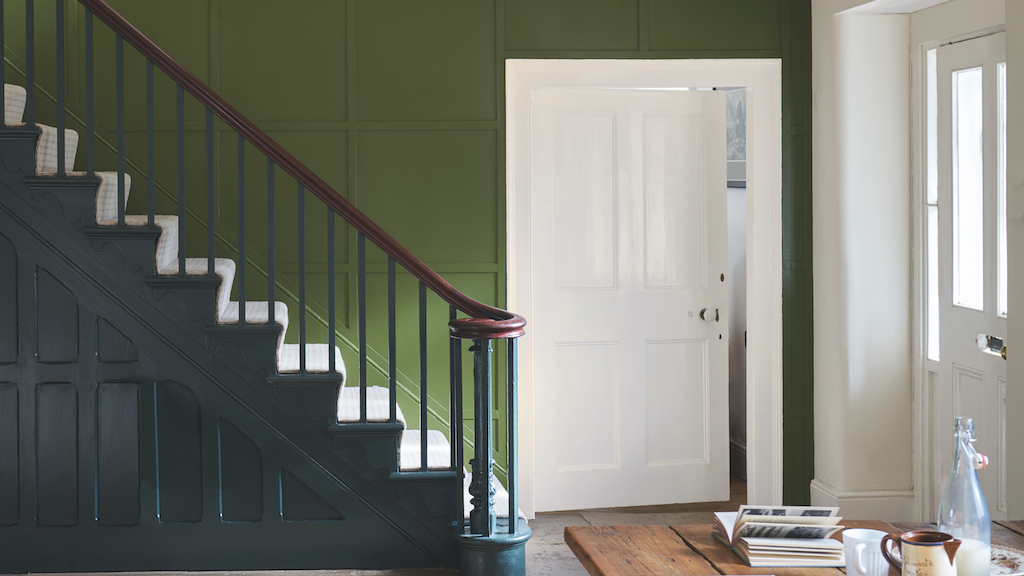

If you’ve ever been confronted by that instantly recognisable sound, you’ll know that learning how to fix squeaky stairs is an incredibly useful life skill that can end up saving you a lot of hassle and irritation in the long run!
Squeaky stairs won’t happen to everyone, but they do occur in lots of homes, unfortunately. Usually, it happens because of unintended friction between the different parts of the staircase. And squeaks can happen whether your staircase ideas are newly implemented, or you’ve had the same staircase for years. Greg Snowden, DIY expert and Tasker at Taskrabbit, explained, 'When weight is applied, it can cause slight movements and shifts in the components of your stairs, leading to friction, and resulting in a squeaking sound.'
How to fix squeaky stairs – 5 different methods
There can however be various different reasons for said movements and shifts in your staircase, with some of the most common being things like loose fittings, or gaps within the staircase. But don’t panic; squeaks don’t mean your staircase is about to fall down! And luckily, there are ways to address this rather pesky issue relatively simply, whatever the cause.
What you will need
- A screwdriver, like this Magnusson 12-piece set from ScrewFix
- Nails, like these Daill Lost head nails from B&Q
- A dry lubricant, such as this highly-rated Kasp option available at Amazon, or this popular baby powder!
- Some wooden shims, like this 24-piece set from Amazon
- Adhesive or carpenter's glue – try this UniBond option, available at B&Q
- A carpet runner – we love this stunning jute option from Dunelm
Step-by-step
Before trying any of these methods on your staircase, it's important to take all of the necessary safety precautions, such as wearing protective gear and using the right tools.
For many of the below options (though not all of them), you'll need to remove the carpet from your stairs. Some of these methods also involve going under the stairs – and it is strongly advised that if you are unsure of how to do either of these things, or don’t feel confident doing them, call in professional to do the job for you, safely.
1. Assess where the squeak is coming from
Understanding where the sound is coming from is essential for providing the correct solution to the problem. As such, your first step when it comes to how to fix squeaky stairs is to walk up and down the staircase to locate the source. This is a great trick when planning how to fix squeaky floorboards too.
Once you’ve located the guilty step, you'll need to assess which part of the stair is presenting the issue. Fantastic Services' handyman coordinator Issabel Williams says, 'Stand in the middle of the problem step, and gently sway from side to side, and forwards and backwards, to determine if the squeak is coming from the back, side or front of the tread (which is the horizontal part of the step, where you actually place your feet).
Get the Ideal Home Newsletter
Sign up to our newsletter for style and decor inspiration, house makeovers, project advice and more.
She explained, 'A general rule of thumb to follow is that if the squeak is coming from the front of the tread, it has probably become loose from the riser (the vertical side of the step). A squeak from the back or the side will indicate that it’s likely loose at the stinger (the boards at the side of the staircase, keeping the structure together).'
2. Tighten or add screws

You've located the source – so what now? You have a couple of options for how to fix squeaky stairs if the reason for the squeak isn't immediately obvious.
But one of the simplest fixes, and a great place to start, is to tighten or add nails within the structure. In fact, Issabel explains that it’s common for this option to fix squeaky stairs entirely. 'Squeaks are often be caused by loose screws between the stairs and the underlying structure,' she said.
Firstly, locate the nails that are already within your stairs, and tighten these. 'I would suggest tightening these loose nails or screws by using a screwdriver,' Greg said.
If that doesn’t fix the problem and the squeak is still present, he then suggests 'adding additional nails to secure the components more firmly.'
3. Try using a dry lubricant
Another common reason for stair squeaks – particularly those that come from the back or the sides of the tread – is friction between the different components, which is why a lubricant can be helpful.
'A common lubricant for wooden stairs is powdered graphite, which can be found at many hardware stores. Alternatively, you can also opt for talcum powder!' Issabel explained.
To apply it, she suggests locating the joint that squeaks. Then, 'work (the lubricant) into the gaps between the tread and the riser. You can either use your finger, or a stiff paintbrush to do that. This should help reduce friction and eliminate the noise.'
However, not all lubricants are made the same, and an essential tip for this fix is to use a dry one specifically. Issabel said, 'Avoid using any oil-based products, because they can warp the wood, become sticky with dust or make the areas slippery if they’re overused.'
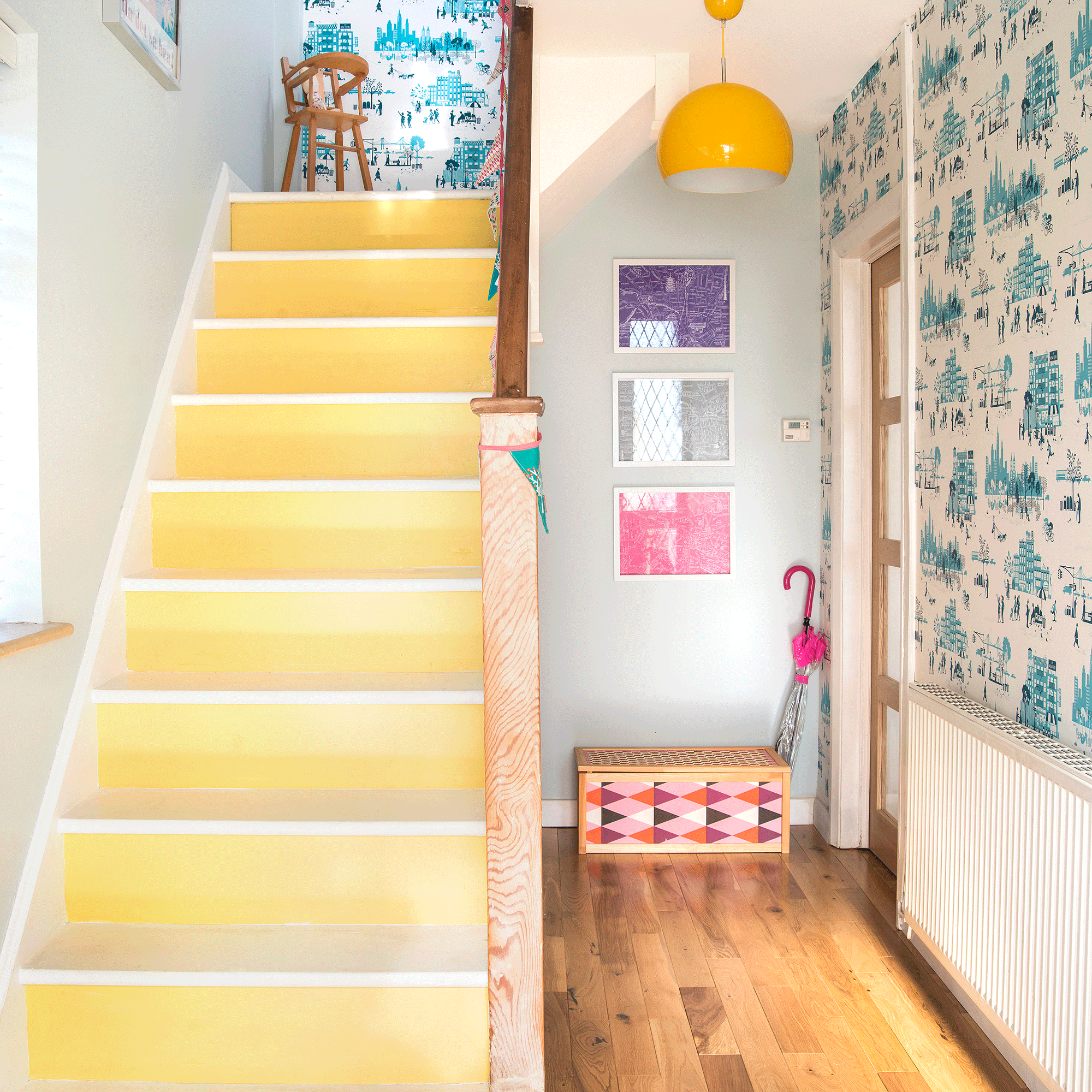
4. Apply glue to your stair components
As mentioned, squeaks can be caused by too much movement between the different parts of your staircase. To minimise this, an easy fix is to apply some heavyweight glue, particularly if you spot any noticeable gaps.
'For more persistent squeaks, apply construction adhesive between the treads and the risers,' Issabel advised. 'Run a bead of adhesive along the joint where the tread and riser meet, making sure it fills any gaps.
'Press the tread firmly against the riser and use clamps or weights to hold it in place until the adhesive dries. This method creates a strong bond between the components, and reduces squeaks by minimising the movement.'
5. Stabilise your staircase – if you can
An option that will likely take a bit more work is to use various tricks to reinforce and stabilise the structure of your stairs. You'll only need to try if the above methods haven't worked.
To do this however, you'll need to be able to access the underside of your stairs. If you can't do this easily, it's best to call in a professional.
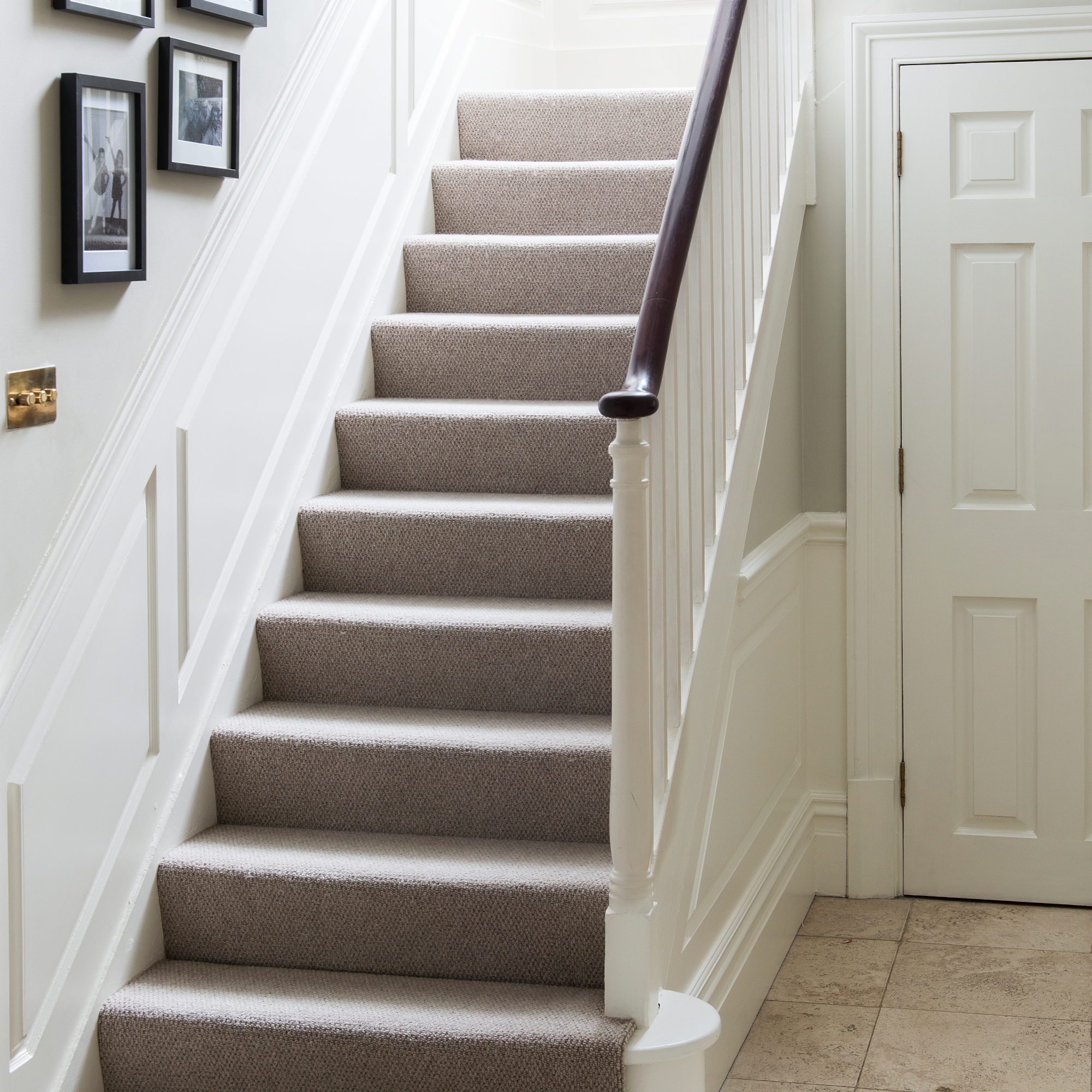
But if you can, what is the suggested method? 'One option for how to fix squeaky stairs is to insert a shim, which is a thin and often tapered or wedged piece of material, to fill small gaps or spaces you can see to eliminate the movement in between gaps,' Greg said.
For a step-by-step on completing this, Issabel suggests, 'Apply and firmly press the blocks into the angle where the riser and the tread meet. Position one of them at the centre and the other two at the edges of the step. Once they’re glued, add additional securing by driving 2 screws into each block.'
Doing this, Greg explained, 'will help to stabilise the stairs and reduce the friction that causes squeaking.'
If this doesn’t do the trick, or you can’t quite get to the gaps within your stairs, the experts instead suggest installing squeak-proof brackets, or angle braces, which are available at most hardware stores. However, this may be a job for an expert.
6. If all else fails, add a carpet runner
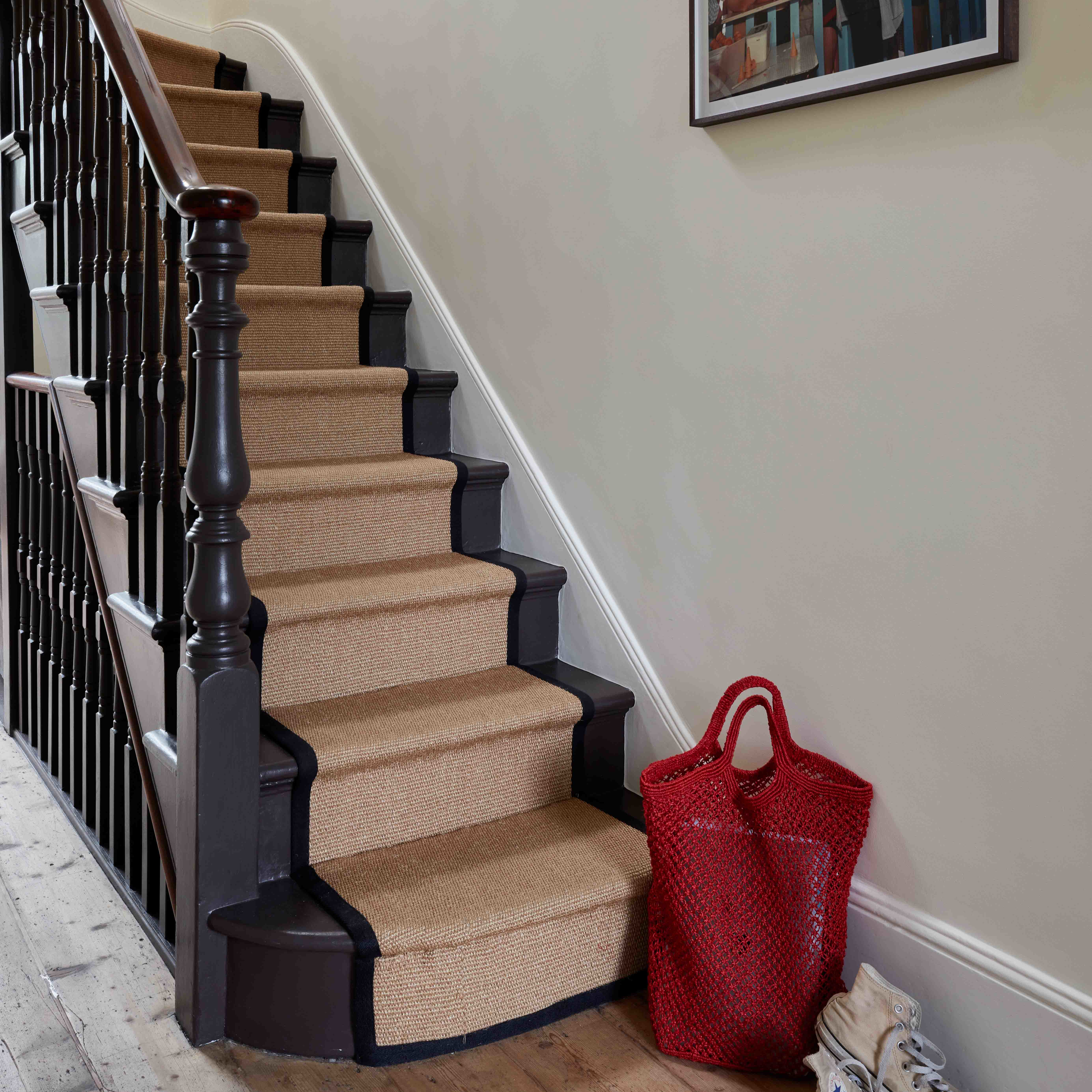
If the above methods haven’t made a dent in the pesky squeaking, one of your only other options – aside from calling in a handyman who can give you specific advice – is adding carpet ideas to your stairs if they are wooden. This may be in the form of fitted carpet, a carpet runner, or tread covers.
Put simply, 'These can help dampen the noise by adding a layer of cushioning between the steps and the underlying structure,' Issabel shared.
And they can be beneficial in other ways, too! 'Carpeting or tread covers also provide a non-slip surface and enhance the visual appeal of your stairs,' she said.
Aside from this, squeaking may occur simply because your staircase is old and worn out. In this case, the only solution left is to replace parts, or install a new staircase altogether.
FAQs
How do you fix squeaky stairs from above?
Plenty of the methods mentioned can be done from above, saving you the time and hassle of going underneath your staircase (or figuring out how to even do that!)
In fact, if you need to employ one of the methods which requires going under the stairs, you may feel more comfortable contacting a professional to ensure this is done properly and safely.
But before that, if you want to try and fix your squeaky stairs from above yourself, you should first try tightening and adding screws. Greg says, 'You can reinforce the connection between the treads and stringers by using additional screws or nails, and ensure that the stair treads are securely fastened to the stringers.'
As shared in the above methods, dry lubricant is also a great way to try and stop your stairs squeaking from above. And perhaps one of the most hassle-free – and inexpensive – ways to try and address noises in your staircase is, of course, adding carpet.
'Carpet runners can be a good way to soften the surface of the stairs and can be installed to cushion footsteps and reduce friction,' Greg said, though he warned that 'these must be properly secured to prevent tripping.'

What is the best lubricant for squeaky stairs?
It's clear that a dry lubricant is the best option for a squeaking staircase, in order to avoid damaging the wood or causing the staircase itself to become unsafe.
When it comes to the best product for the job, this dry WD-40 lubricant is a good option. And as shared earlier, this is one of the top-rated dry lubricant options on Amazon.
Any regular talcum powder you happen to have at home can also be a great fix – as can graphite powder, of which there are plenty of options that you can buy in stores or online.
Greg warns though that a dry lubricant may not keep your staircase squeak-free forever. 'In some cases, a lubricant may be effective in reducing or eliminating squeaks caused by friction, however, the effectiveness is reliant on the materials used in the staircase, and the amount of foot traffic.'

Amy Hunt is an experienced digital journalist and editor, now working in a freelance capacity specialising in homes and interiors, wellness, travel and careers. She was previously Lifestyle Editor at woman&home, overseeing the homes, books and features sections of the website. Having worked in the industry for over eight years, she has contributed to a range of publications including Ideal Home, Livingetc, T3,Goodto, Woman, Woman’s Own, and Red magazine.
-
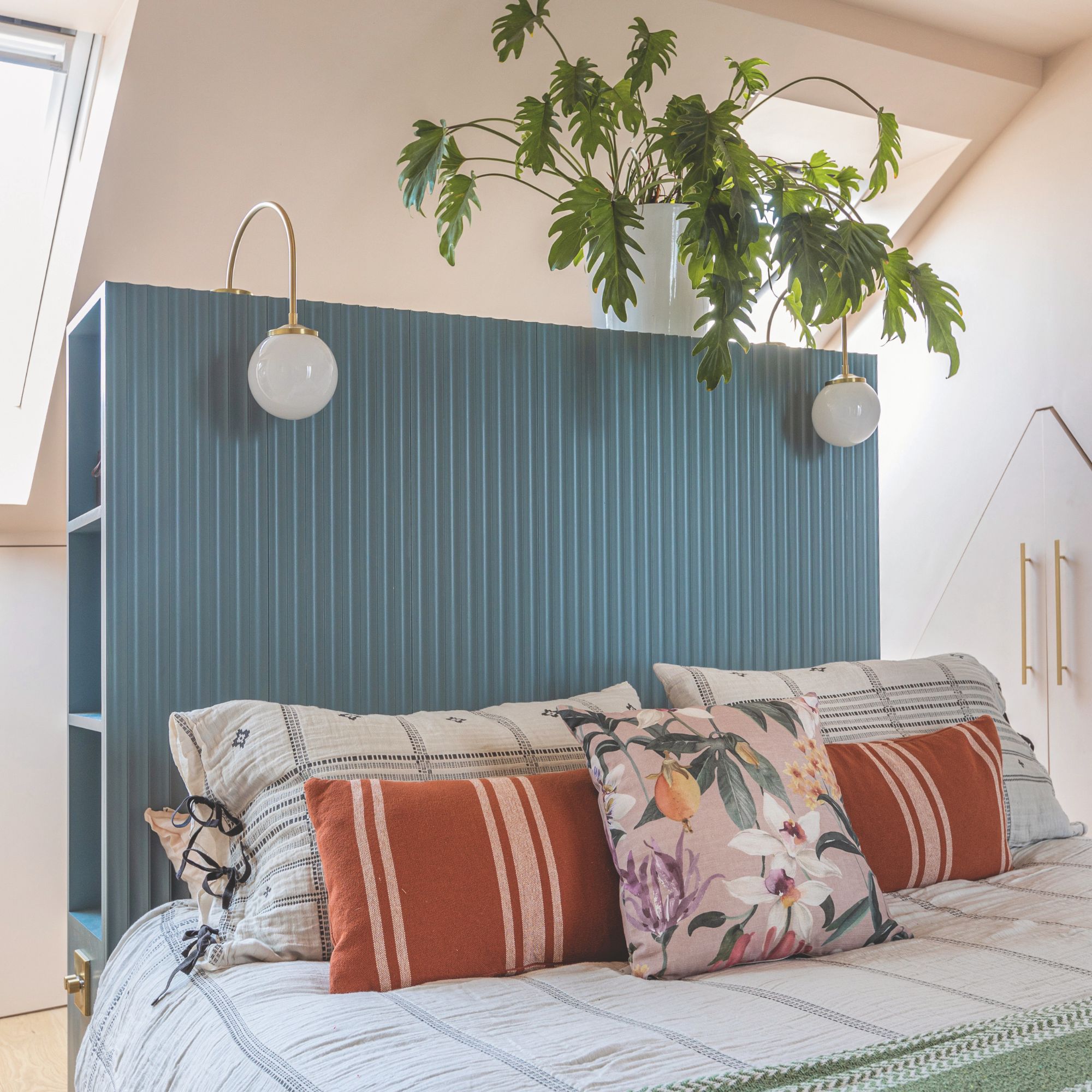 5 signs you’ve taken decluttering too far — and how you can pull yourself back, according to organisation experts
5 signs you’ve taken decluttering too far — and how you can pull yourself back, according to organisation expertsYou might have to start resisting the urge to purge
By Lauren Bradbury
-
 What is the Party Wall Act 3m rule and is it something you should be worried about? This is what the experts say
What is the Party Wall Act 3m rule and is it something you should be worried about? This is what the experts sayDon't get caught off-guard by the Party Wall Act 3m rule — our expert guide is a must-read
By Natasha Brinsmead
-
 Shoppers can’t get enough of The Range’s lemon tree, but I’ve found an even cheaper bestseller at B&Q - it’s perfect for a Mediterranean look
Shoppers can’t get enough of The Range’s lemon tree, but I’ve found an even cheaper bestseller at B&Q - it’s perfect for a Mediterranean lookWelcome the summer with this glorious fruit tree
By Kezia Reynolds